From Kray Regional Tourist Portal
At the end of the eighteenth century, as a result of the Partitions of Poland, Galicia fell under Austrian rule. One of the results of this geopolitical shift was the program of settling the lands with German colonists. In this way the Austrian authorities hoped to improve the province’s backward economy and partially implement its Germanization.
German migrants received a kind of start-up capital, free land, cattle, and building materials. For working German immigrants, the conditions were appealing and so they rushed to Galicia. In the territory of the present-day Lviv region alone, at the turn of the eighteenth and nineteenth centuries more than three dozen German settlements arose. Today, the presence of Germans in the territory is evidenced by toponyms, the remnants of religious and farm buildings, and the memories of the few elders who still remember the times of the Ukrainian-Polish-German coexistence.
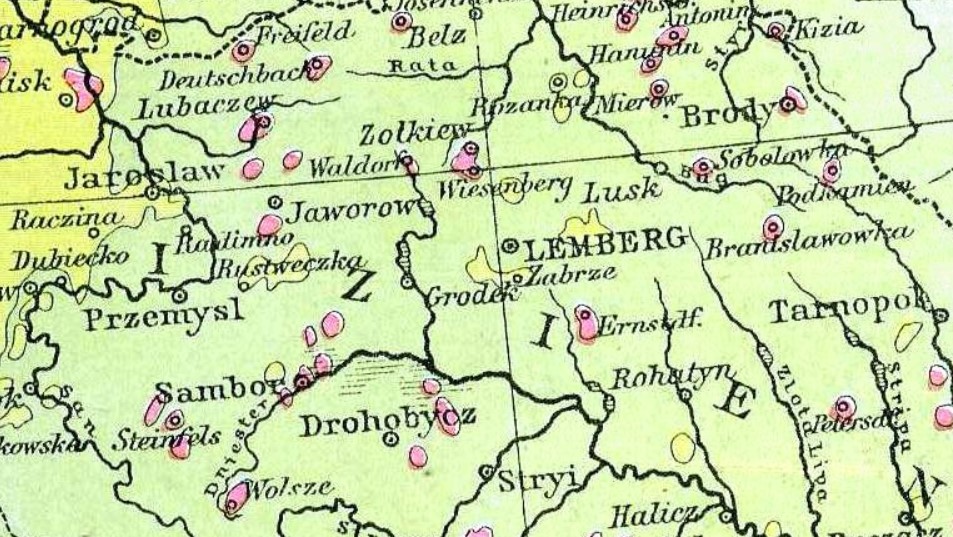
Mountain of Meadows
For those wishing to visit the shadows of a Galician Germany, we recommend visiting Wiesenberg. Why? There are several reasons for this: A church built by settlers as well as residential and farm buildings have been preserved. It was the site of one of the iconic battles of the First World War. There is an incredible view that opens from the Red Stone. And finally, this place is very mystical—there was once a pagan temple, and now, exploring the hills of Wiesenberg, with each gust of wind you feel the air of something mysterious.
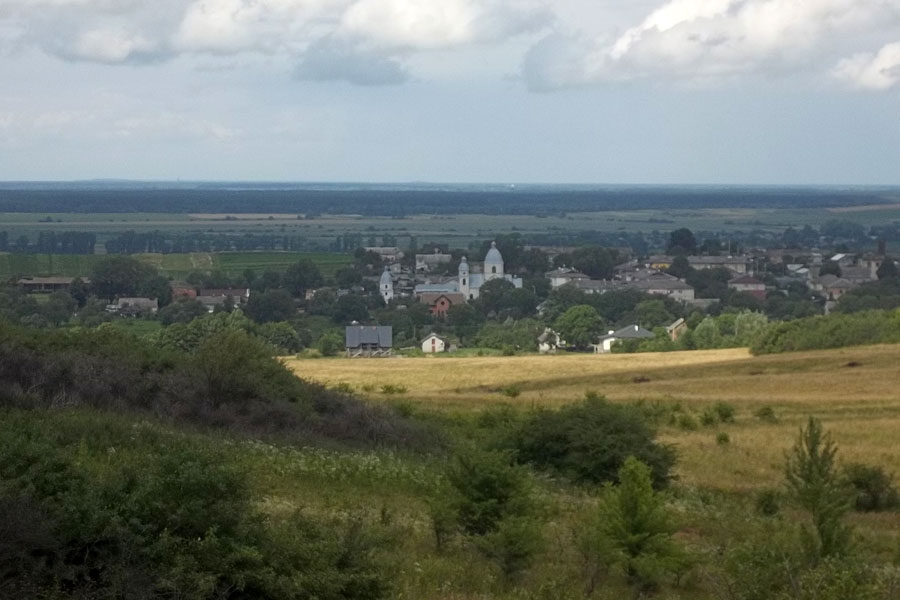
But do not look for it on the map. A village with this name no longer exists. Today Wiesenberg is part of Mervychi, a village with its own interesting story.
But let’s get back to things more earthly. Since the priority of the colonists was to get settled in the new land as quickly as possible, they paid little attention to architectural details while building their homes. Wiesenberg’s preserved buildings testify to the pragmatism of its former inhabitants. In fact, this pragmatism was inherent in all German settlements. The colonial dwelling houses were comfortable and functional, designed for the communal residence of parents and the family of an elder son or daughter. As such, it is unlikely one will be very impressed by the aesthetics found in the remnants of German houses. Nonetheless, the semi-abandoned buildings are an important testimony to the history and multiculturality of the region.
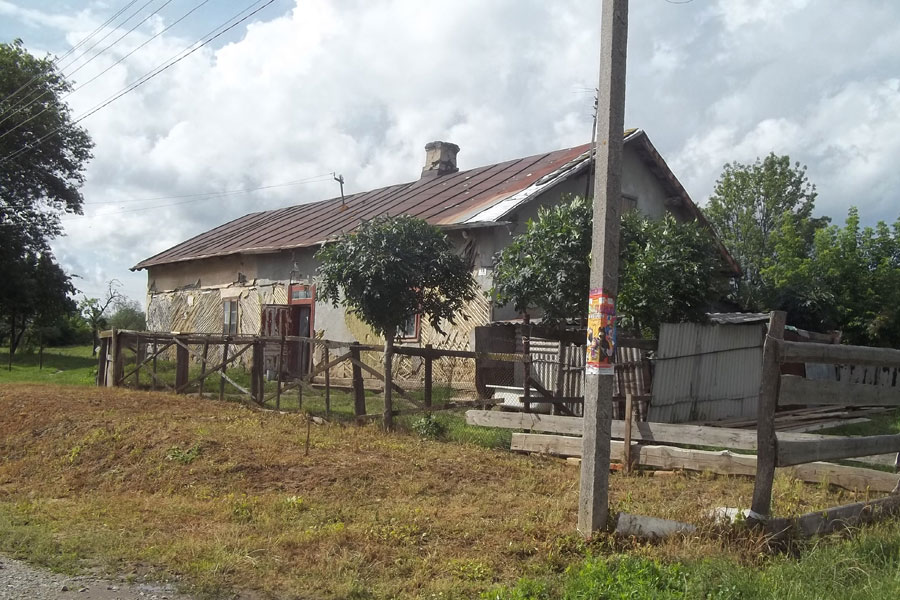
Wiesenberg appeared in 1786, when 45 families from the Palatinate arrived on the outskirts of the ancient village of Mervychi, eight kilometers from Zhovkva and six from Kulykiv. It did not appear in one day but grew as the inhabitants managed to address their domestic needs. But they also did not forget about their spiritual needs. In 1858, the settlers built the Catholic Archangel Michael Church in the center of their cross-shaped settlement. However, already in 1925, it was in disrepair and the Zhovkva authorities ordered it to be closed. After such a decision, the colonists actively took up restoration work. In one year, 3,000 zloty were collected and the church was restored and built two meters higher.
The Wiesenberg church, like most of Galicia’s places of worship, was ravaged by the wars and atheism of the twentieth century. It was severely damaged several times, and during World War II, it was nearly completely destroyed by a fire. The burned down ruins were used by the Soviet authorities as a grain storage, and then a store.
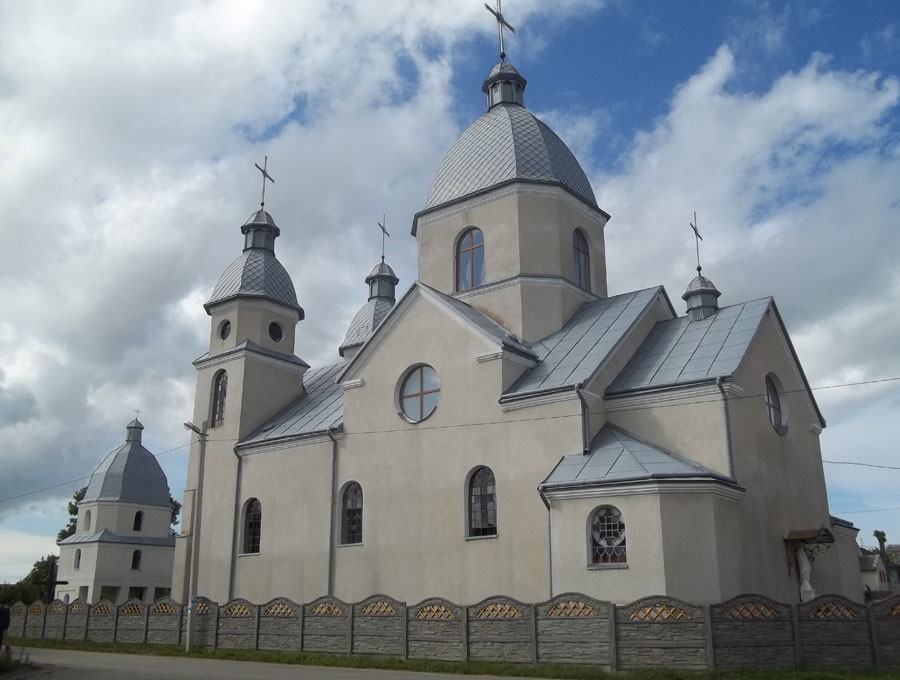
Until the 1990s, the church remained in ruins. In 1994, it was turned it into a Greek Catholic church, which saved the sanctuary, although during its fundamental reconstruction it lost some of its authentic appearance.
A peculiar attraction of Wiesenberg’s heritage is the well. Actually the peculiarity is not the well itself, but its location. The public well as usual practice was built on the village green. Ultimately, the village planning underwent changes and the well ended up in the middle of a road. There were attempts to close it up; however, local residents understood the value of such an attraction for their village and wished to protect the “illogical” well.
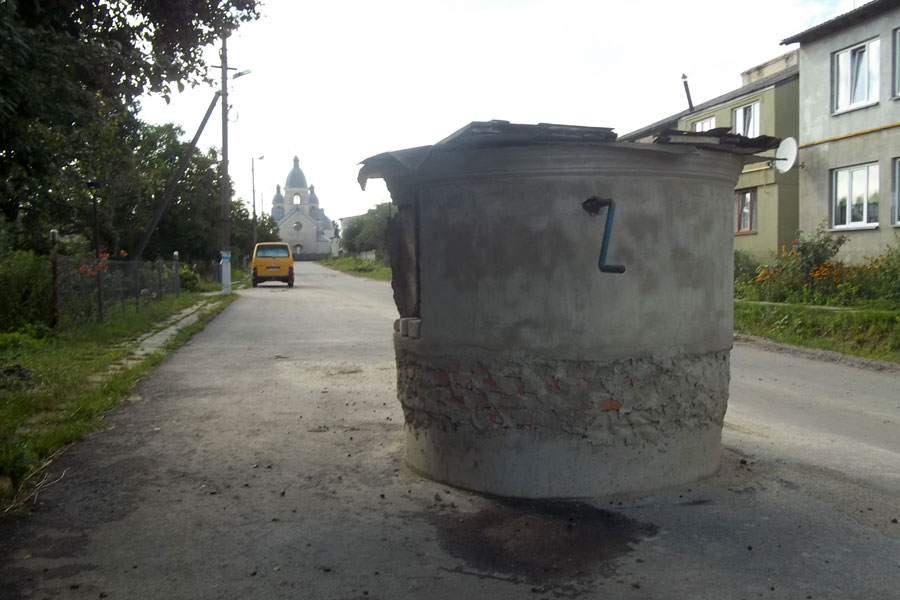
The era of Germans in Galicia came to an end in early 1940. By a decision of the Third Reich, the colonists were forcibly resettled in the western territories of Poland that had been captured by Germany. The immigrants had to fill the labor resources of the warring state, serve in the Wehrmacht and the SS in the special forces, for personnel with knowledge of Ukrainian and Polish languages and the living conditions and psychology of the local population was needed.
Today, all that is left to remind us about the several generations of colonists from the Palatinate are the gravestones in the old German cemetery – monuments to a bygone era and people from distant lands who found rest in the generous Ukrainian land.
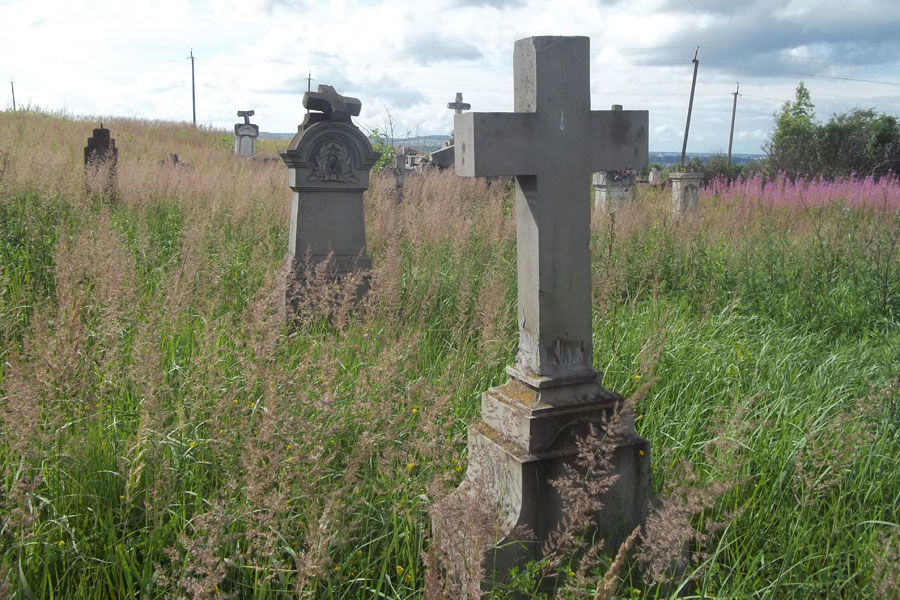
Red Blood Under the Red Stone
“In this land, we must walk with respect. We cannot desecrate it. There is a lot of blood in it,” says a local resident standing at the foot of the Red Stone.
Indeed, on June 22, 1915, there was a fierce battle between the Austro-Germanic and Russian troops. It was a battle which to a large extent became decisive for the fate of Lviv.
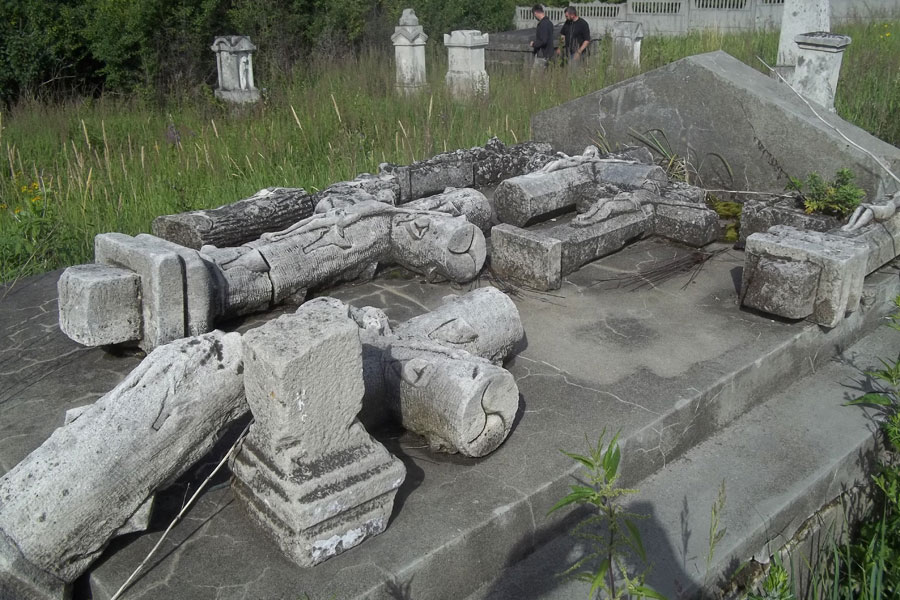
From the Red Stone, which is 353 meters high, opens a panorama, including over the eastern plain from where the Russian army came. The Russians chose a nearby mountain with a similar name – White Stone – as their observation point.
“June 22, 1915, there was a fierce battle in which the line of defense of General Brusilov was broken and the way to the liberation of Lviv opened. On June 22, the Russian army retreated from Lviv.
“The elderly residents retorted that the slaughter was so violent that the soldiers’ cries and the moans of the wounded were heard in the neighboring villages.
“In the archives it was possible to find a map of battle sites, which clearly shows the line of the front, which runs near the village of Mervychi, and on June 22, in the legend of the map there is reference to the battle on Mount Red Stone.
After these events, a fraternal grave was created on the mountain. According to legend, it consisted of large stone blocks, on which the cross with a crucifix was carved and the names of the more than a hundred dead. The monument was taken under the care of the colonists from Wiesenberg,” says journalist Bohdan Bilan, who studies the local history.
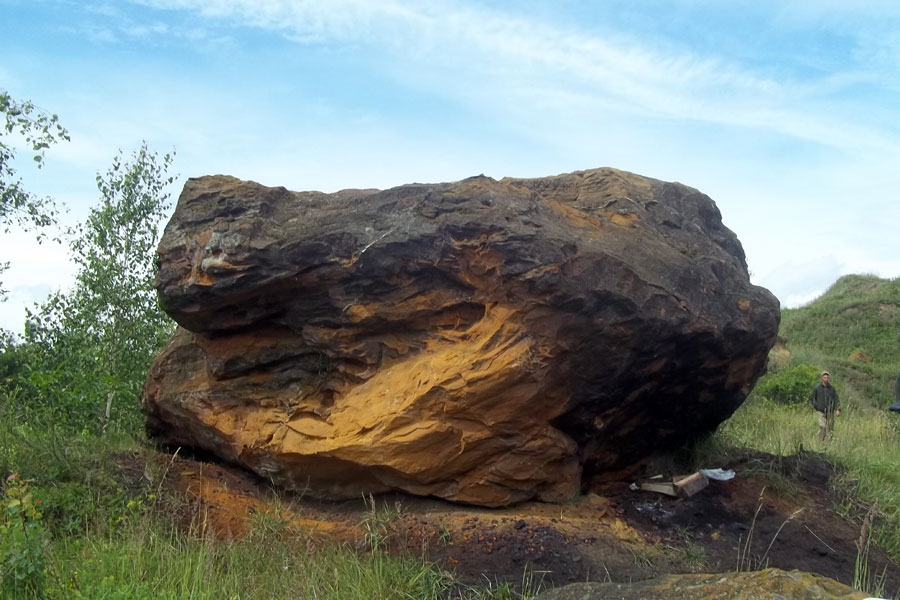
The cross, apparently, was destroyed after the arrival of the Soviets. The grave itself remained for some time, but it started to crumble when a quarry was created here to excavate sand sometime in the early 1950s. The elderly residents remember that children who played near the Red Stone saw bones, skulls, belt buckles, remnants of leather shoes. Subsequently, it was all taken or buried somewhere nearby.
In 2016, due to the efforts of the Mervychi community, a symbolic grave was restored and a cross was established on the Red Stone.
Today, there are efforts to place the grave in the list of memorial sites and tourist routes. Local historians and authorities, representatives of the organization Memorial are working on it. The issue has already reached the Lviv Regional State Administration. The Delegation of the German People’s Union for the Care of Military Burials has also promised to provide assistance in the creation of the memorial.
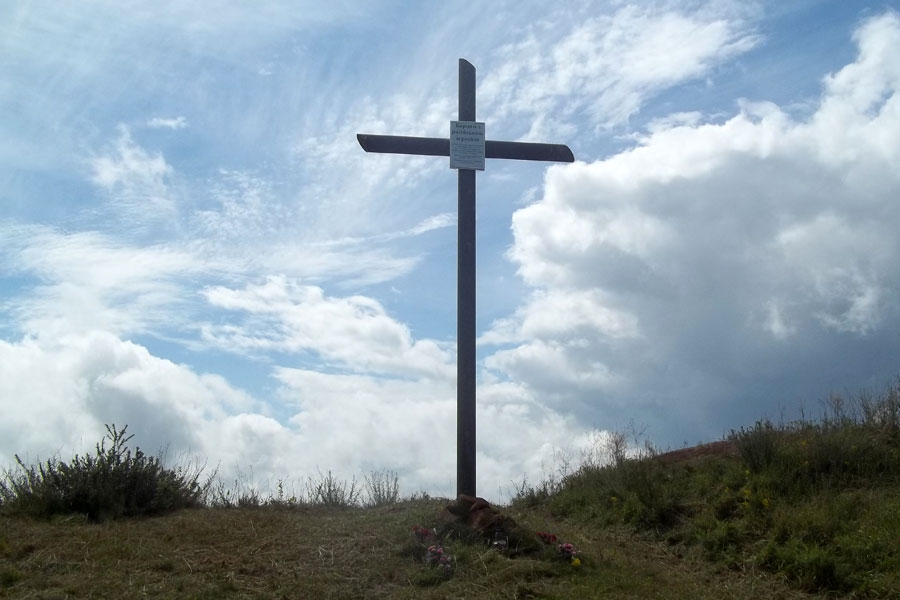
Mervychi as an Example of Mutual Understanding
In the fourteenth century, at the foot of the mountain was an ancient settlement, which may have been called Stryhy. But in the times of the Tatar invasion, residents were forced to flee to the nearby marshy plain covered with thick tall grass. From this comes the name of the village Mervychi. “Merva” means thick grass.
The first written mention of Mervychi dates from October 11, 1377. This is when Prince Vladislaus II of Opole presented the Lviv Dominicans the villages of Krotoshyn, Zashkiv, Kosteyiv and 4 courts in Mervychi.
During the times of the Polish Commonwealth, the village was royal property in the Lviv land. In the nineteenth century the village was bought by a well-known Lviv physician and brewer Karol Kiselka. Since the area had long been rich in hops that was considered no worse than Czech hops, Kiselka opened a brewery near the village which became famous in the whole district.
The dominant structure in Mervychi is the Church of St. John the Baptist, which was founded in 1886 by the efforts of local peasants, who were financially supported by Karol Kiselka. After Ukrainian independence, the church was renovated.
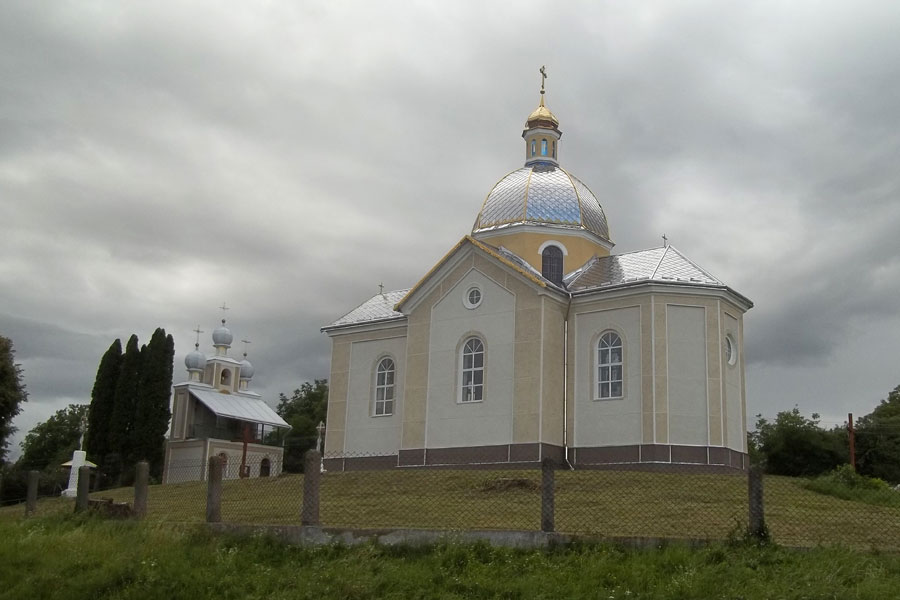
The peaceful history of the Ukrainian Mervychi, the neighboring Polish Kościejów (Kosteyiv) and the non-existent now German Wiesenberg can serve as an example of mutual understanding between people of different nationalities and denominations and as a vivid illustration of the era of multiculturalism in the region. In fact, Ukrainian villagers of the twenty-first century reaffirm this statement, preserving memory and seeking new information about people from other lands who left their mark in the history of the Lviv region.
Edited and translated by Areta Kovalsky
Source: Kray Regional Tourist Portal





